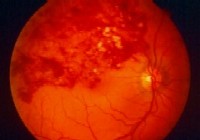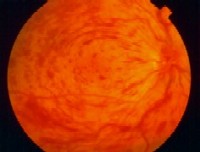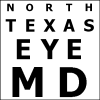Retinal Vein Occlusions
Most people know that high blood pressure and other vascular diseases pose risks to overall health, but many may not know that high blood pressure can affect vision by damaging the veins in the eye. High blood pressure is the most common condition associated with retinal vein occlusions. About 10% to 12% of the people who have retinal vein occlusion also have glaucoma (high pressure in the eye).
Branch Retinal Vein Occlusion (BRVO)
Branch Retinal Vein Occlusion (BRVO) is blockage of the small veins in the retina, the layer of light-sensing cells at the back of the eye. If the blocked retinal veins are ones that nourish the macula, the part of the retina responsible for straight-ahead vision, some central vision is lost. During the course of vein occlusion, 60% or more will have swelling of the central macular area. In about one-third of people, this macular edema will last for more than one year.
BRVO causes a painless decrease in vision, resulting in misty or distorted vision. If the veins cover a large area, new abnormal vessels may grow on the retinal surface, which can bleed into the eye and cause blurred vision.
There is no cure for BRVO. Finding out what caused the blockage is the first step in treatment. Your ophthalmologist (Eye M.D.) may recommend a period of observation, since hemorrhages and excess fluid may subside on their own. Depending on how damaged the veins are, laser surgery may help reduce the swelling and improve vision. Laser surgery may also shrink abnormal new blood vessels that can grow and that are at risk of bleeding. Newer injectable medicines are being investigated for treating BRVO.
If you have had a branch retinal vein occlusion, regular visits to your ophthalmologist are essential to protect vision.
Central Retinal Vein Occlusion (CRVO)
A central retinal vein occlusion (CRVO) blocks the main vein in the retina, the light-sensitive nerve layer at the back of the eye. The blockage causes the walls of the vein to leak blood and excess fluid into the retina. When this fluid collects in the macula (the area of the retina responsible for central vision), vision becomes blurry.
Floaters in your vision are another symptom of CRVO. When retinal blood vessels are not working properly, the retina grows new fragile vessels that can bleed into the vitreous, the fluid that fills the center of the eye. Blood in the vitreous clumps and is seen as tiny dark spots, or floaters, in the field of vision.
In severe cases of CRVO, the blocked vein causes painful pressure in the eye. Retinal vein occlusions commonly occur with glaucoma, diabetes, age-related vascular disease, high blood pressure, and blood disorders.
The first step of treatment is finding what is causing the vein blockage. There is no cure for CRVO. Your ophthalmologist (Eye M.D.) may recommend a period of observation, since hemorrhages and excess fluid often subside on their own. Laser surgery may be effective in preventing further bleeding into the vitreous or for treating glaucoma, but it cannot remove a hemorrhage or cure glaucoma once it is present. New experimental treatments are now under investigation.
